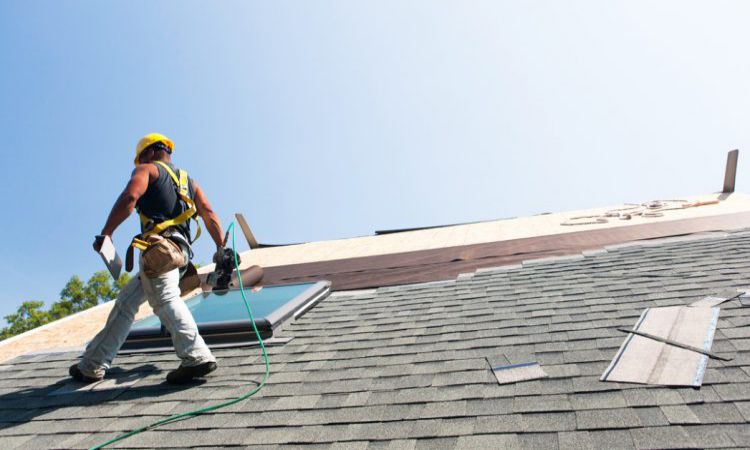 Homes and businesses that wish to achieve long-term performance and get the most out of their existing roofing need to pay attention to regular inspections. Regular roof inspections by an experienced roofing contractor in Arlington ensure identification and timely fixes of common problems.
Homes and businesses that wish to achieve long-term performance and get the most out of their existing roofing need to pay attention to regular inspections. Regular roof inspections by an experienced roofing contractor in Arlington ensure identification and timely fixes of common problems.
In addition to inspections, you need to know the common roofing problems affecting your roofing system, how dangerous the problems are, and how quickly they need attention. In this article, we go over how you can spot trouble in different roofing systems.
Table of Contents
Common trouble spots across all roofing systems
While some roofing problems are specific to particular roofing systems, some cut across the board. Some of the common problems affecting all roofing types include;
Clogged or restricted roof drains
A problem with the roof’s drainage system can affect the roof and the property. Clogs are caused by accumulated debris, dirt, and other organic matter. When clogged, water, ice, and snow find it difficult to pass through the rain gutter into the downspouts and away from the property. This clog can lead to water pools that affect insulation and roofing materials. Roof drainage clogs also threaten foundation problems.
Installation quality
The quality of any roofing system depends on two factors, the quality of installation and the materials used. Poor quality roofing installation compromises the roofing material’s strength and integrity. It also exposes the property owner to common dangers like leaks, pest problems, additional repair or replacement costs, etc.
Leaks from loose flashings, counterflashing, and coping
Leaks are perhaps the greatest threat to the quality of your roof and roofing material. Loose flashings, counterflashing, and coping create cracks and crevices for rainwater and moisture. Roof inspections can ensure early detection and repairs.
Single-ply roofing problems
One of the commonest challenges you’ll face with your single-ply roofing is along the membrane seams. Seam failure can typically be traced back to membrane shrinkage due to age or poor installation techniques. Problematic seams create space that allows water under the membrane, causing water damage and related problems. A careful roof inspection can ensure early detection of this problem.
Another issue with single-ply roofing is blisters. Blisters are caused by moisture trapped under the membrane. Small blisters require regular monitoring and larger blisters require immediate attention to prevent extensive damage. Repairs can be done by replacing membranes in the affected areas.
Improper membrane attachment can also be a problem, especially during heavy winds. This problem can lead to separation between the roof and membranes. It is possible to re-attach membranes in affected areas.
Built-up roofing problems
Alligatoring is a common problem with built-up tissue roofing. Alligatoring surfaces with age and sunlight exposure. The problem is characterized by shrinkage and small cracks. When not addressed quickly, the cracks expand and give the roof an alligator skin-like appearance. This problem can be detected during regular inspections, and the affected areas can be recoated to seal the cracks. Leaving the problem unaddressed can lead to larger cracks which expose the property to moisture problems like leaks, mold, and mildew.
Built-up roofing may also suffer ridge issues caused by a separation between the roof insulation and the underlying deck or thermal stress. Irrespective of the cause, ridge issues should be corrected immediately to prevent further damage to the roofing membrane.
As with single-ply roofing, built-up roofing also suffers from blisters. Blisters happen when water is trapped under the membrane and can grow from as little as 1 inch to several diameters.
Modified bitumen roofing problems
Modified bitumen roofing combines the benefits and properties of both single-ply roofing and built-up roofing. However, this means they share some common problems affecting each roofing type, including blisters, ponding water, and punctures.
As seamed roofs are welded in place, modified bitumen may come under thermal stress due to ongoing expansion and contraction. The ongoing thermal stress may cause the seams to fall apart, opening the underlying membrane to leaks and moisture problems.
Minimal seam problems can be patched using adhesives, while larger problems may require replacement for ongoing protection.
Metal roof problems
Metal roofing has a long lifespan when installed correctly and properly maintained. However, they are prone to common issues like nail or fastener failure due to corrosion, improper use of materials, high wind vibrations, and thermal expansion and contraction of the metal roof.
Your metal roof may become compromised if enough fasteners fail. The result could be drastic, depending on the affected area. It is important to check fasteners on metal roofs during annual roof inspections to ensure protection for the next year.
Another problem to watch out for is corrosion. Metal roofs are typically made from aluminum or steel components prone to rust and corrosion when exposed to the right conditions. This problem can be prevented by applying protective coatings on the metal panels and seam materials.
Understanding the specific problems associated with your roofing type can improve your inspection practice to maintain your roof properly.






